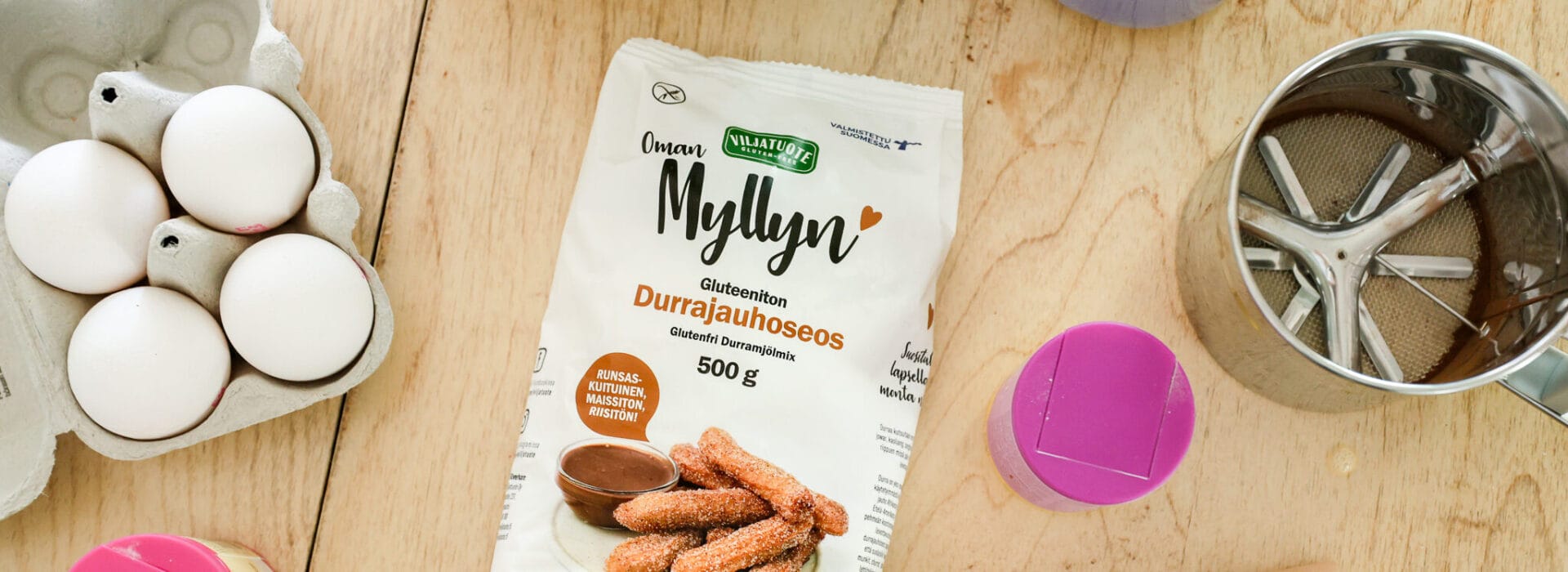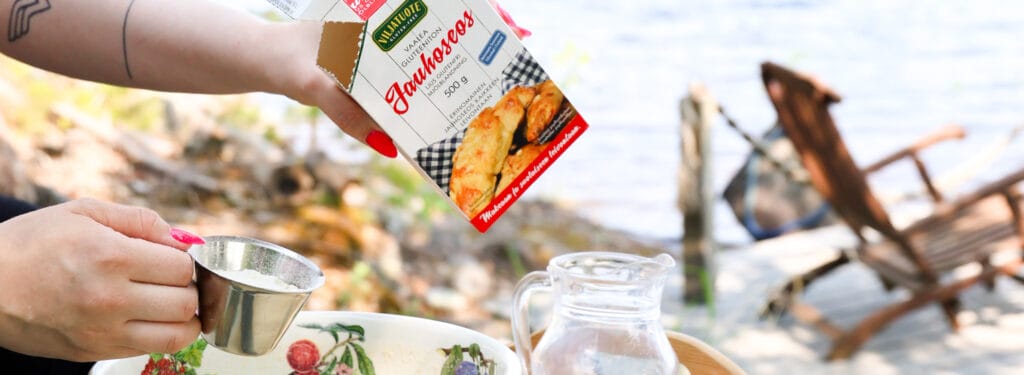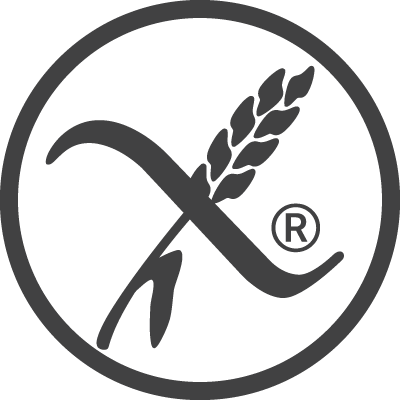Knowledge base - Gluten-free diet

Gluten-free diet
A gluten-free diet is a diet in which no cereal products containing gluten, such as wheat, barley and rye, are consumed. These grains contain protein that can cause inflammation and other symptoms in people with celiac disease and gluten sensitivity.
When following a gluten-free diet, gluten-containing grains are replaced by other gluten-free alternatives such as rice, quinoa, buckwheat and corn. Durra, teff and tapioca, which are widely used around the world, are also suitable alternatives as part of a gluten-free diet.
Celiac disease and IBS - different diets >>
Going gluten-free can be forced or a choice >>
How to go gluten-free >>
Tips for starting a gluten-free life >>
The Coeliac Association estimates that there are at least 150 000 people in Finland who follow a gluten-free diet. A large proportion of them suffer from celiac disease or a cereal allergy, but more and more are switching to a gluten-free diet for other reasons, such as people suffering from various intestinal diseases or irritable bowel syndrome.
Coeliac disease and IBS - different diets
A person with coeliac disease should avoid foods containing gluten, which causes intestinal symptoms. The reactions of IBS patients to different foods vary, but FODMAP foods that often cause gastrointestinal symptoms and contain fermentable carbohydrates that are poorly absorbed in the small intestine include dairy products, apple, onion, broccoli, beans and lentils, and artificial sweeteners.
Celiacs should avoid gluten for life, while people with IBS can limit FODMAP foods to alleviate symptoms. FODMAP restriction is not necessary for people with celiac disease and a gluten-free diet is not necessarily effective in relieving symptoms of IBS.
It is important to discuss with your doctor or dietician the appropriate diet in both cases.
Going gluten-free can be a matter of necessity or choice
A gluten-free diet is a must for people with coeliac disease, an autoimmune disorder that damages the lining of the small intestine under the influence of gluten. Celiac disease is a condition for which there is no known cure. However, by following a gluten-free diet, people with coeliac disease can live a symptom-free and fulfilling life.
A gluten-free diet can also be an option for those with a confirmed gluten sensitivity. The symptoms are similar to those of celiac disease, but the intestinal tissues are not damaged as in celiac patients. The symptoms of gluten sensitivity can range from mild to severe and may include abdominal pain, diarrhoea, constipation, fatigue and skin symptoms.
Duodecim has published an article Nutritional management of irritable bowel syndrome which discusses the role of diet in the management of IBS symptoms in a comprehensive way. For people with IBS, gluten-containing cereals have been found to be a common cause of symptoms, so replacing them with gluten-free raw materials may provide relief from symptoms.
How do I switch to a gluten-free diet?
Tips for starting a gluten-free life
Getting used to a new diet can take time: don't be discouraged if you make mistakes in gluten-free cooking or baking. Learning is part of the process.
Plan your meals in advance: this will help you avoid temptations to gluten-containing foods. Find gluten-free recipes from your favourite restaurants.
Keep gluten-free snacks to hand: this way you always have something to eat when you get hungry.
Ask and make sure the dishes are gluten-free: when dining out, ask if they offer gluten-free options.
Store food and ingredients correctly: make sure that gluten-free and gluten-containing foods never touch. If necessary, use different utensils and accessories, such as cutting boards, rolling pins and pans, only for gluten-free baking and cooking.
For more information on gluten-free diets, please see the following sources we use:
- Coeliac Society: gluten-free diet
- Duodecim Health Library: Nutritional management of irritable bowel syndrome
- The website of the Disadvantaged Group helenakemppainen.com
- Pirkanmaa Allergy and Asthma Association's online service for people with special diets Erimenu.fi




